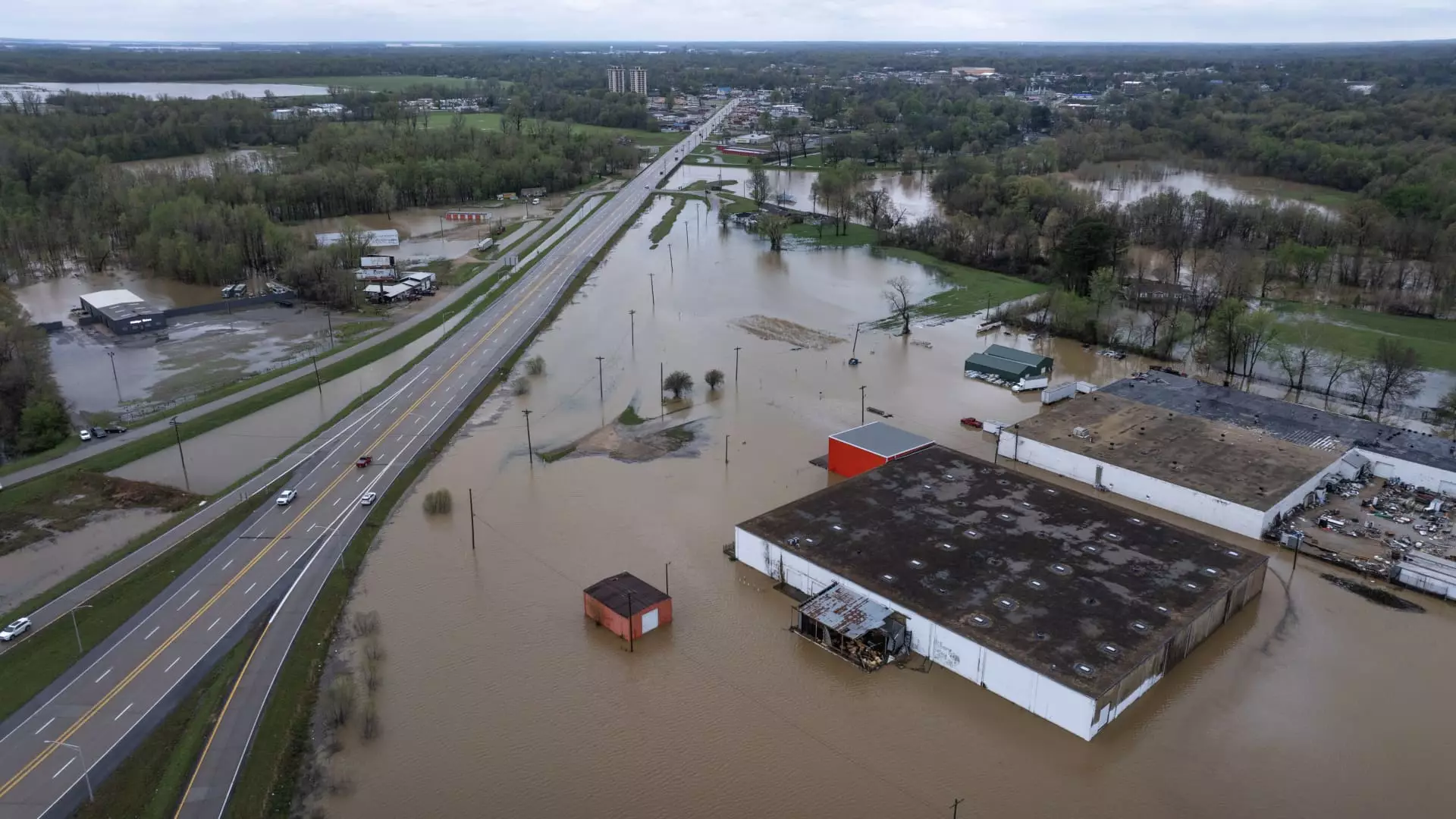The recent spate of intense rainstorms wreaking havoc in the Northeast serves as a potent reminder of nature’s erratic temperament. As communities across various states emerge from the catastrophic clutches of previous storms, with fatality counts tragically ticking up to 21, the impact of this natural disaster cannot be overstated. Flood warnings have spread like wildfire, affecting nearly 9 million residents in states ranging from Georgia to Alabama. It’s not merely a weather event; it’s a humanitarian crisis begging for a response that goes beyond reactive measures.
In Louisville, Kentucky, the scene is desperate. River levels surged an alarming five feet in a mere 24 hours, compelling authorities to issue mandatory evacuations for vulnerable populations living near the Kentucky River. Critical infrastructure crumbled under the weight of excessive rainfall; a levee breach in Owensboro resulted in an uncontrolled inundation of agricultural fields. While some weather patterns may classify this as an extraordinary circumstance, those affected are branded by loss—a term that follows them like a shadow.
Breaking Down the Statistics
The grim statistics underscore a narrative that we cannot afford to ignore. The aftermath of such storms has exposed over 40 individuals to heroic rescues by local fire departments, rescue teams racing against time to save lives. Yet the psychological toll is incalculable for those who “have lost everything they’ve had,” as articulated poignantly by Chad Womack, assistant chief of the Anderson County Fire Department. His words linger, a haunting reminder of the battles fought not just against rising waters but also within the human spirit.
The call for change is urgent, especially amid the rising toll; at least 93 preliminary tornadoes reported merely since Wednesday depict a landscape of destruction that is both uncommon and alarming. The increase in severe weather events raises an essential question: is climate change contributing to these phenomena, or are we grappling with anomalies of nature? Experts warn that unless we take actionable steps towards resilience, the discourse surrounding these once-in-a-generation storms may soon become the new normal.
Infrastructure and Preparedness: A Fraying Safety Net
As rivers swell and waters rise, the infrastructure designed to protect us appears to be fraying at the seams. The National Weather Service has warned of major flood stages at 19 river locations, compelling us to reevaluate our preparedness. Kentucky has set an appalling record for the highest four-day rainfall—15.59 inches in a brief window—testifying to a vulnerability that calls into question the effectiveness of our emergency protocols.
Yet, the implications of heavy rain and storms reach beyond immediate physical damages. Economic repercussions loom large as the productivity of farming regions and local businesses teeters on the brink of a downward spiral. The ramifications emphasize a crucial point: the need for a comprehensive approach to climate resilience, incorporating sustainable development and rapid response strategies.
A Broader Perspective: The Pacific and Beyond
As we grapple with the torrential weather battering the Southeast, we must not overlook the emerging patterns on the West Coast. A series of Pacific storms threaten areas already struggling with their unique climate challenges, further testing the resolve and preparedness of communities. It leads one to ponder: are we acting merely as reactionaries to weather puzzles, rather than proactively creating solutions? This mindset shift is not just timely; it is necessary.
The intertwined fate of communities across regions must encourage cross-border collaboration and the sharing of resources and knowledge. Climate scientists, urban planners, and emergency responders must unite, fostering a culture of preparedness that transcends traditional political lines. The weather may be uncontrollable, but our response should certainly be enhanced.
In facing this modern-day crisis, we must shoulder the responsibility of creating a safer tomorrow. The ongoing storm may dissipate, but the underlying issues plaguing our climate response need addressing immediately. What lies ahead will define our societal resilience or become another chapter in the annals of environmental negligence.


Leave a Reply